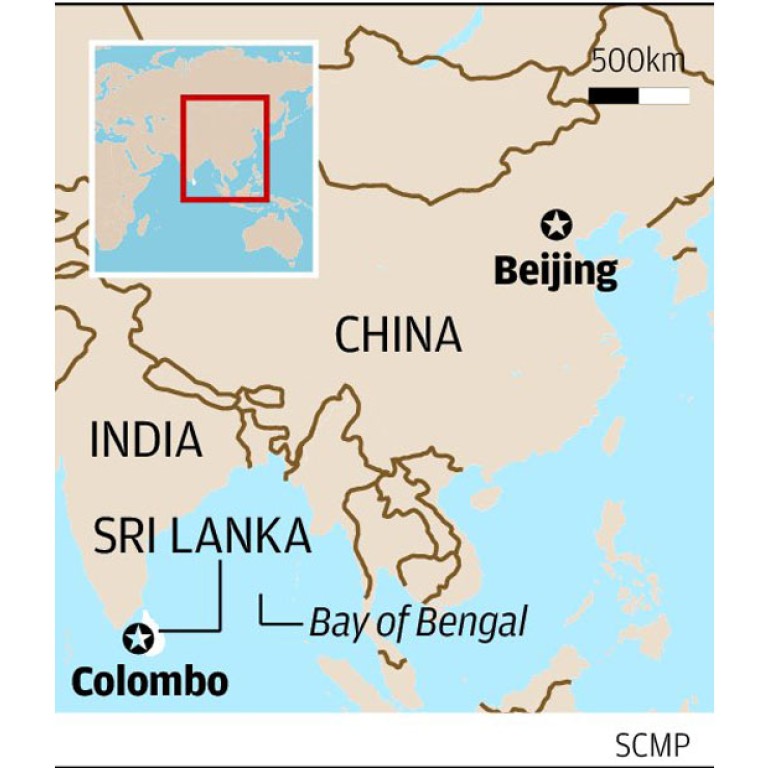
Risks load up for Colombo port from India plans
Rising competition from ports being built in India could pose a threat to cargo throughput at a new US$500 million container port in Colombo, Sri Lanka, 85 per cent-owned by China Merchants Holdings (International), which also operates the port.
Rising competition from ports being built in India could pose a threat to cargo throughput at a new US$500 million container port in Colombo, Sri Lanka, 85 per cent-owned by China Merchants Holdings (International), which also operates the port.
"In the next 10 years, the Indian Ocean will become the new battlefield for China and India, which are jostling for control of the region," said Hu Zhiyong, an associate professor at the Shanghai Academy of Social Science's Institute of Asia-Pacific Studies.
India's port-building spree has been partly fuelled by geopolitical tensions in the Indian Ocean.
The Chinese government and mainland companies have invested in a series of port projects in the past few years, covering the northern and western edges of the Indian Ocean. Some Western media have dubbed the ports - Chittagong in Bangladesh, Kyaukpyu in Myanmar, Colombo and Hambantota in Sri Lanka, Gwadar in Pakistan and Bagamoyo in Tanzania - a string of pearls encircling the Indian sub-continent.
China Merchants' involvement in the new Colombo port, a pivotal port on one of India's most important trade lanes, acted as a wake-up call to the Indian government.
Due to chronic under-investment in port facilities in India, about 13 per cent of India's container traffic passes through Colombo, with nearly 70 per cent of the containers handled in the old Colombo Port originating in India.
But port investment plans in India will inevitably divert some of the cargo flow away from Sri Lanka.
In its 12th five-year plan, from 2012, the Indian government proposed investing 738 billion rupees (HK$87.7 billion) in the development of major ports, the Federation of Indian Chambers of Commerce and Industry said.
The plan called for 30 port development projects to be completed in the two years to 2014, the federation said, boosting annual cargo-handling capacity by 288.5 million tonnes. Two new mega ports will be set up. One is Sagar Island in West Bengal, 80 kilometres south of Kolkata, and the other is in Andhra Pradesh. They will each cost 80 billion rupees.
The Indian port plans pose a big threat to Sri Lanka's transshipment hub status, including Colombo port and other ports. To mitigate the loss of cargo to Indian ports, Colombo should lower the charges on transshipment cargo and upgrade the port to be a free port, according to a report from a Sri Lanka-based think tank, Pathfinder Foundation.
Colombo port handled 4.19 million 20-foot equivalent units (teus) of containers last year, down from 4.26 million teus in 2011, despite a 19 per cent rise in trade between Sri Lanka and China to US$2.7 billion. The drop in cargo throughput was mainly due to a 2 per cent year-on-year decline in transshipment cargo, which fell to 3.1 million teus from 3.12 million following a 10 per cent drop in trade between India and China.
China Merchants said its Colombo International Container Terminal, which opened last month, was well placed to handle the challenge because it was the most advanced international transshipment hub in South Asia and could accommodate the largest container ships, capable of carrying 18,000 teus.
Some 70 per cent of cargo throughput in Colombo was international transshipment cargo, it said, with the port in the optimal position to be the transshipment hub between the West and East, especially for markets in the Indian sub-continent and East Africa.
